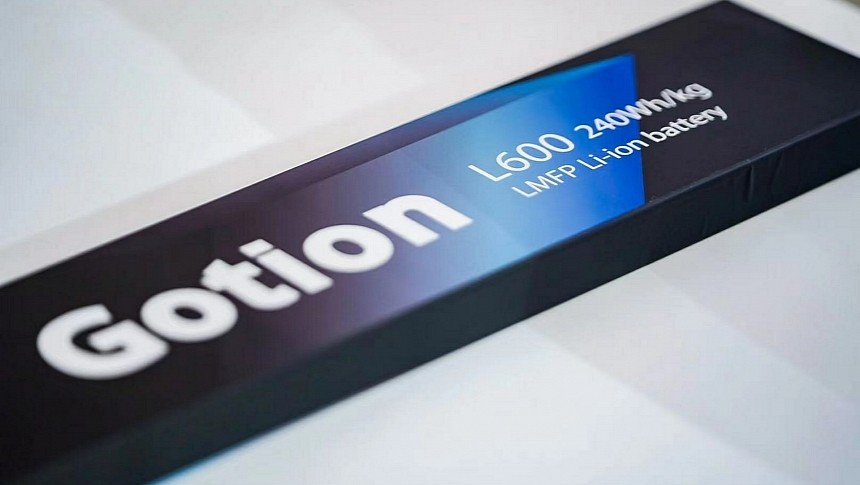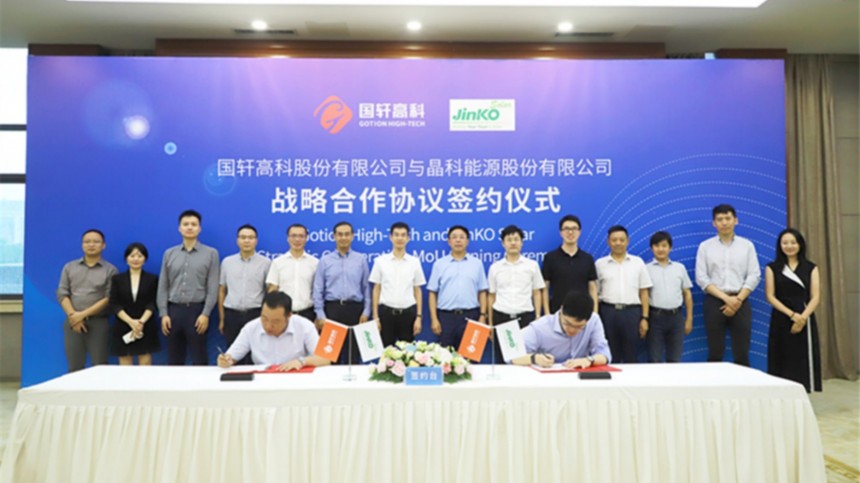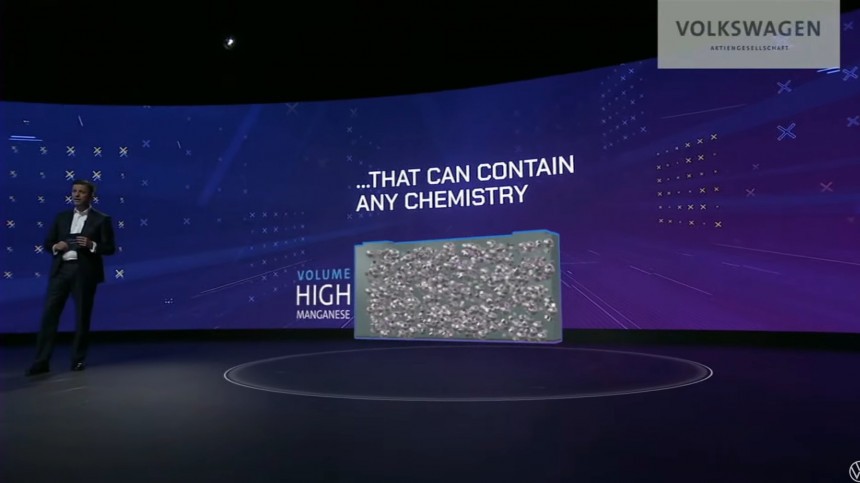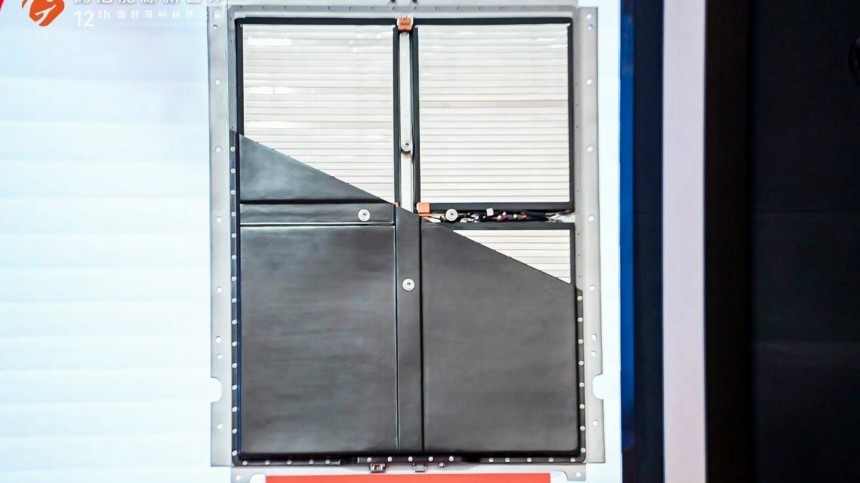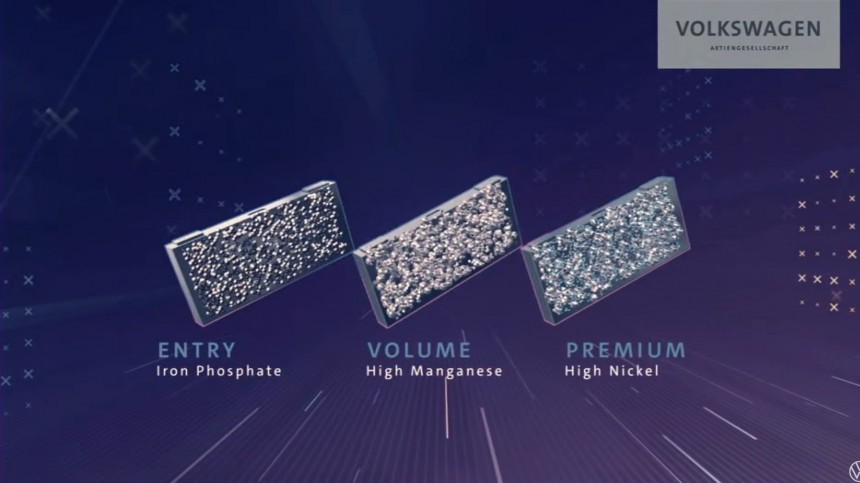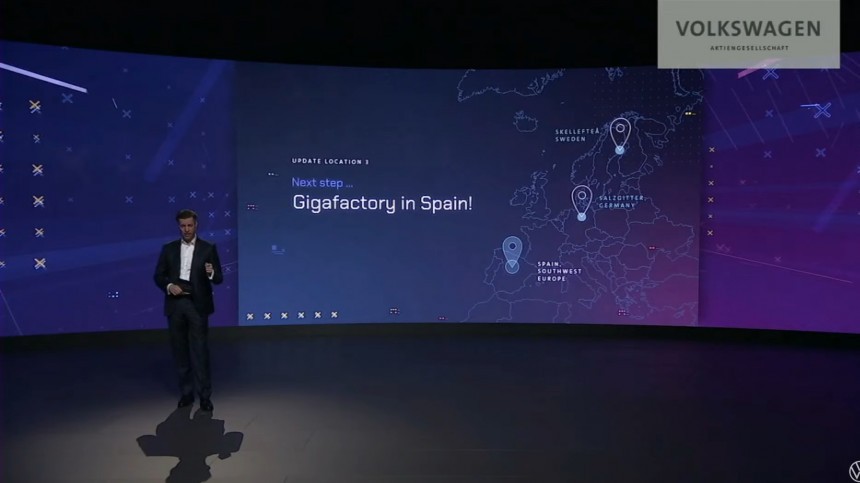You will remember when rumors of a million-mile cell emerged years ago. It came from a study that a certain BEV maker was doing, and people even thought it would arrive in the 4680 format, but it didn't. It was up to a Chinese battery manufacturer connected to Volkswagen to deliver on that promise. To be honest, Gotion High-Tech did not even frame the Astroinno L600 LMFP cells that way, but you just have to put the pieces together.
The Chinese cell maker announced the new lithium iron phosphate (LFP) cells with manganese at the 12th Gotion Technology Conference. According to the company, the Astroinno L600 LMFP batteries have an energy density of 240 Wh/kg at the cell level and can reach 190 Wh/kg when integrated into Gotion High-Tech's groundbreaking pack. That means it surpasses "the pack energy density of current mass-produced NCM cells."
When this battery pack goes into an electric car in 2024, Gotion High-Tech believes it will offer up to 1,000 kilometers (621 miles) of range. It will also stand 4,000 cycles at room temperature and 1,800 cycles at high temperatures – fast charging, to be more precise. These are the pieces we needed to put this puzzle together.
If a battery pack with 621 miles of range can stand 4,000 cycles, that means the owner will not have to worry about replacing it for close to 2.5 million miles (4 million kilometers). Supposing this hypothetical battery electric vehicle was only fast-charged during its entire lifespan, the battery pack would last for approximately 1,118 million miles (1.8 million km). If the Astroinno L600 LMFP cells can really deliver that, they will become the ideal chemistry for entry-level BEVs.
Let's imagine owners will not want 621 miles of range and would be happy with 300 miles instead. If it stood 4,000 cycles, this car would live for 1.2 million miles (1.9 million km). If it was submitted solely to fast charging, that BEV would endure 540,000 miles (a bit more than 869,000 km), which may be quite reasonable for an affordable vehicle subject to such challenging charging conditions.
As you can see, the million-mile promises are not as fantastic as those making them think that they are. Theoretically, you could produce a 1,000-mile battery pack that only endured 1,000 cycles, and it would also reach 1 million miles of lifespan. The key indicator for reliability is how many times the component can be charged without losing capacity. In that sense, the 4,000 cycles Astroinno L600 LMFP cells offer are above average.
Gotion High-Tech did not mention the voltage of the battery pack, but I bet it is 800V due to its fast-charging time: 18 minutes. It also did not say the state of charge (SoC) for starting and ending these charging sessions, but they should go from 10% to 80%, like the Genesis GV60 can deliver when connected to a 350-kW charger. As you may already know, that Korean BEV works with 800V. Alfa Romeo's CEO also said he wanted the electric cars from his brand to fast charge in 18 minutes thanks to their 800V systems.
What the Chinese company did share was that the Astroinno battery pack has 45% fewer structural parts. On top of that, the ones Gotion High-Tech could not avoid are 32% lighter than those from conventional components. The battery manufacturer also saved weight by reducing the length of the battery pack wiring harness from 303 meters (331 yards) to 80 m (87 yds). That means the wiring harness is equivalent to 26% of older battery packs Gotion manufactured.
As I mentioned before, Gotion High-Tech has deep ties with Volkswagen. The German carmaker owns 26% of the Chinese battery supplier's shares, which makes it the largest single shareholder of Guoxuan, as the company is also known. The battery maker seems pretty proud of that connection: so much so that it started talking about the Astroinno L600 LMFP batteries as other good news apart from its supply agreement with Volkswagen for overseas markets. And here we have more pieces to put together.
When the German carmaker announced its volume vehicles would use manganese-rich chemistry, I had the impression that it was referring to a new combination of nickel, cobalt, aluminum, and lithium, meaning it would be a ternary cell with a different content. Gotion shows the idea was to add manganese to LFP, which theoretically also creates a ternary cell: manganese, phosphate, and iron apart from the lithium. Does LMFP fit in the description? I'll have to check with battery specialists because I have no idea if that is the case.
That said, Volkswagen should have a version of its unified cell with Gotion High-Tech's LMFP. The German carmaker said entry-level BEVs would have LFP, volume vehicles would get this new chemistry that is most likely LMFP, and premium vehicles would receive high-nickel cells. There is no word about regular NMC or NCA cells, such as the ones the ID family currently uses. The idea may be to get rid of these chemistries as soon as unified cells are ready.
If that theory is correct, Volkswagen will not use the amazing new battery pack that Gotion High-Energy created: it will develop its own solution with LMFP unified cells. The first affordable EVs from the brand – such as the Cupra Raval – will only arrive in 2025. The Chinese battery maker said its Astroinno L600 LMFP battery pack will make its premiere in 2024. Now we just have to discover which carmaker will use it and in which model.
When this battery pack goes into an electric car in 2024, Gotion High-Tech believes it will offer up to 1,000 kilometers (621 miles) of range. It will also stand 4,000 cycles at room temperature and 1,800 cycles at high temperatures – fast charging, to be more precise. These are the pieces we needed to put this puzzle together.
Let's imagine owners will not want 621 miles of range and would be happy with 300 miles instead. If it stood 4,000 cycles, this car would live for 1.2 million miles (1.9 million km). If it was submitted solely to fast charging, that BEV would endure 540,000 miles (a bit more than 869,000 km), which may be quite reasonable for an affordable vehicle subject to such challenging charging conditions.
Gotion High-Tech did not mention the voltage of the battery pack, but I bet it is 800V due to its fast-charging time: 18 minutes. It also did not say the state of charge (SoC) for starting and ending these charging sessions, but they should go from 10% to 80%, like the Genesis GV60 can deliver when connected to a 350-kW charger. As you may already know, that Korean BEV works with 800V. Alfa Romeo's CEO also said he wanted the electric cars from his brand to fast charge in 18 minutes thanks to their 800V systems.
As I mentioned before, Gotion High-Tech has deep ties with Volkswagen. The German carmaker owns 26% of the Chinese battery supplier's shares, which makes it the largest single shareholder of Guoxuan, as the company is also known. The battery maker seems pretty proud of that connection: so much so that it started talking about the Astroinno L600 LMFP batteries as other good news apart from its supply agreement with Volkswagen for overseas markets. And here we have more pieces to put together.
That said, Volkswagen should have a version of its unified cell with Gotion High-Tech's LMFP. The German carmaker said entry-level BEVs would have LFP, volume vehicles would get this new chemistry that is most likely LMFP, and premium vehicles would receive high-nickel cells. There is no word about regular NMC or NCA cells, such as the ones the ID family currently uses. The idea may be to get rid of these chemistries as soon as unified cells are ready.
